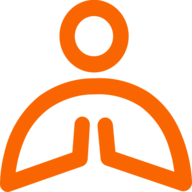Yoga can be a valuable tool for managing pain from degenerative disc disease (DDD) by improving spinal flexibility, strengthening supportive muscles, and enhancing body awareness. It also promotes relaxation and reduces inflammation, which can alleviate chronic pain. Here's how yoga can help:
- Improves Spinal Mobility and Flexibility
Gentle yoga poses help maintain or improve the range of motion in the spine, preventing stiffness.
Cat-Cow Pose (Marjaryasana-Bitilasana): Encourages spinal mobility.
Supine Twists (Supta Matsyendrasana): Gently stretches and realigns the spine.
- Strengthens Core Muscles
A strong core reduces stress on the spine by providing support and stability.
Bird Dog Pose (Dandayamana Bharmanasana): Strengthens the back and abdominal muscles.
Plank Pose (Phalakasana): Builds core and shoulder strength.
- Improves Posture
Poor posture can worsen DDD symptoms by placing extra pressure on the discs. Yoga helps align the spine.
Mountain Pose (Tadasana): Promotes awareness of standing posture.
Bridge Pose (Setu Bandhasana): Strengthens the back and opens the chest.
- Enhances Circulation
Gentle movement increases blood flow to the spine, nourishing the discs and tissues around them.
Legs-Up-The-Wall Pose (Viparita Karani): Promotes circulation and relieves lower back strain.
- Reduces Pain Through Relaxation
Chronic pain can be exacerbated by stress. Yoga practices like meditation and pranayama calm the nervous system.
Pranayama (Breathwork): Techniques like Nadi Shodhana or Bhramari help reduce pain perception.
Yoga Nidra: Encourages deep relaxation, reducing tension in the back.
- Minimizes Compression on the Spine
Certain yoga poses can relieve pressure on the affected discs, reducing pain.
Child's Pose (Balasana): Gently stretches the lower back without compression.
Supported Reclined Bound Angle Pose (Supta Baddha Konasana): Allows the spine to relax.
Precautions for Practicing Yoga with DDD
-
Avoid extreme movements: Deep twists, forward folds, or backbends can strain the spine.
-
Use props: Support the back with bolsters or cushions.
-
Listen to your body: Stop any pose that aggravates pain.
-
Modify poses: Adapt movements to your comfort level.
-
Consult a professional: Work with a yoga therapist familiar with spinal conditions.
